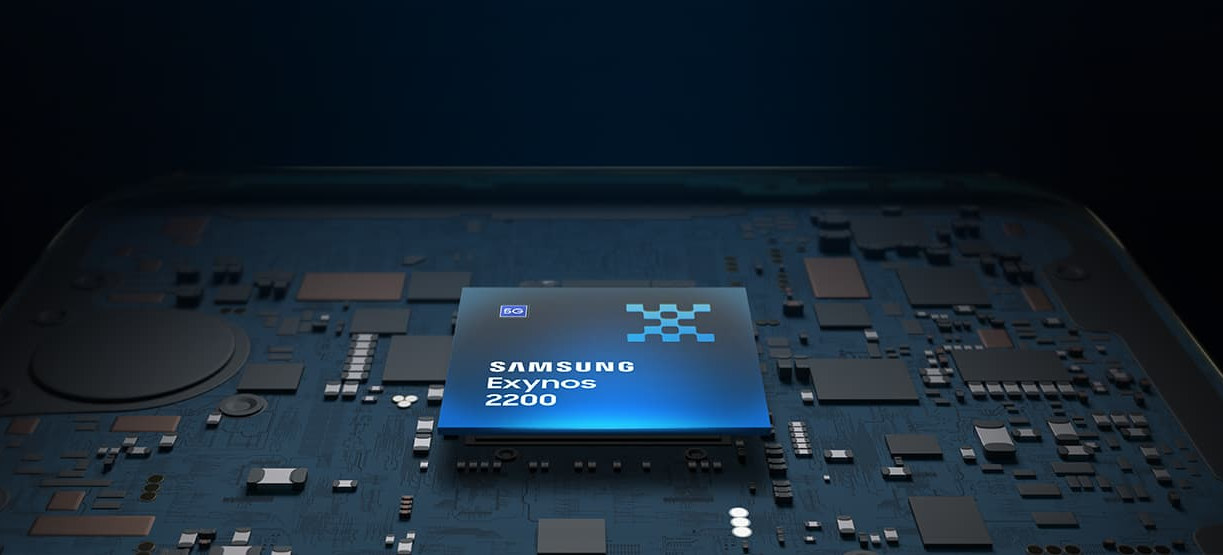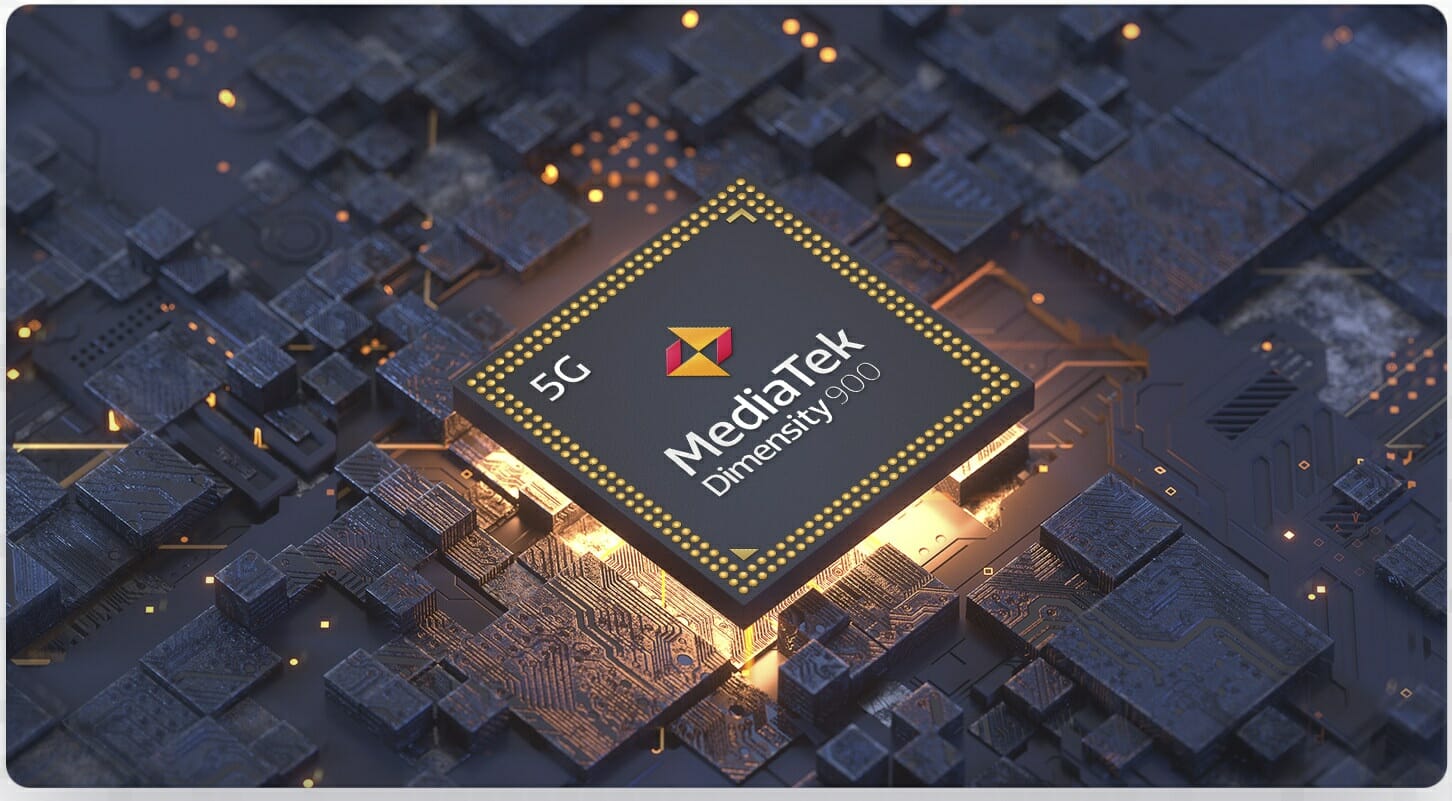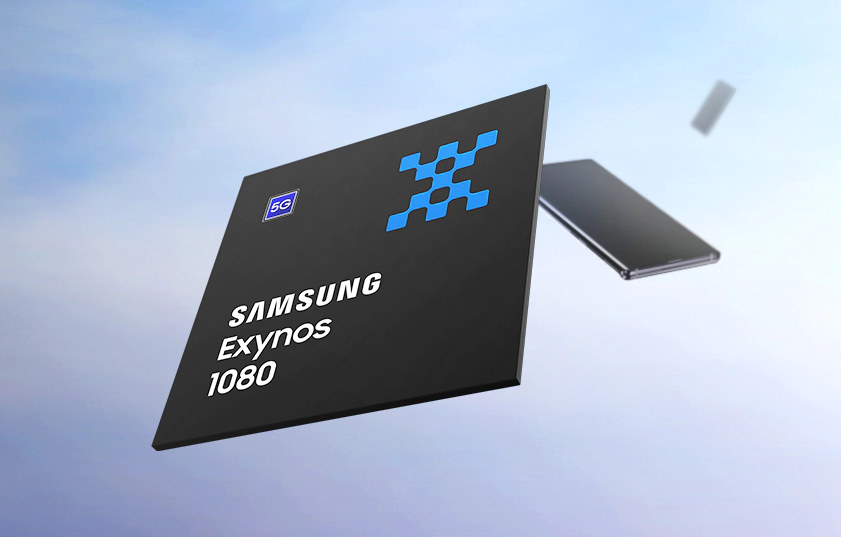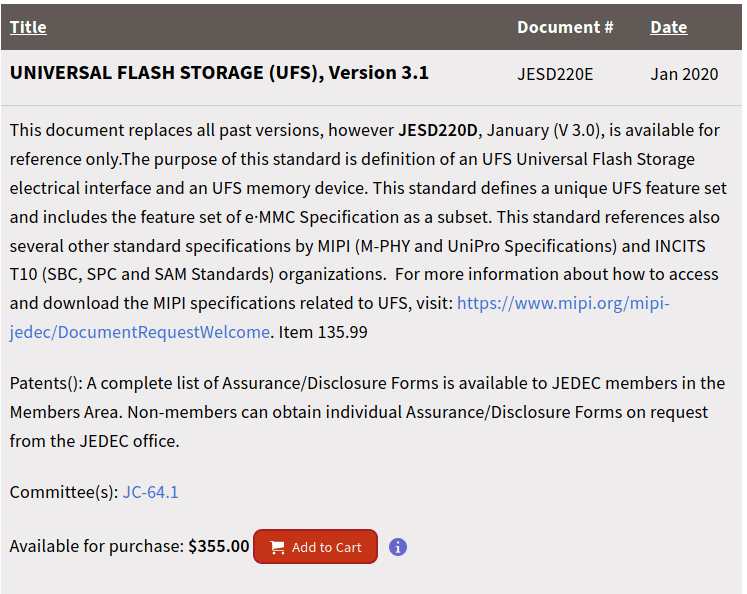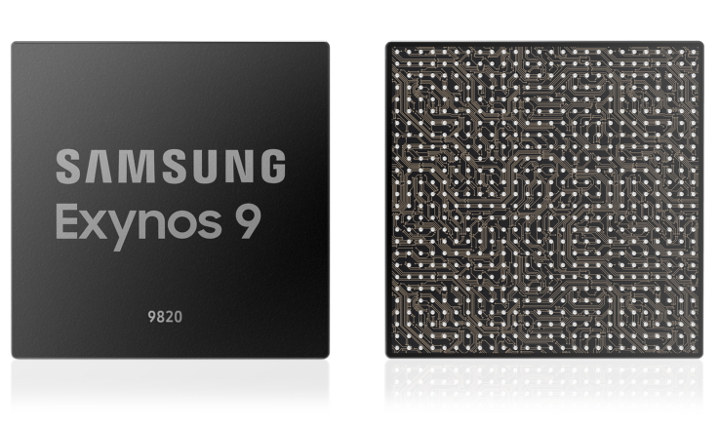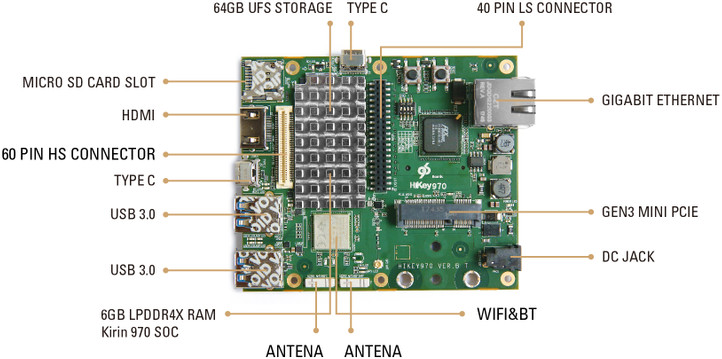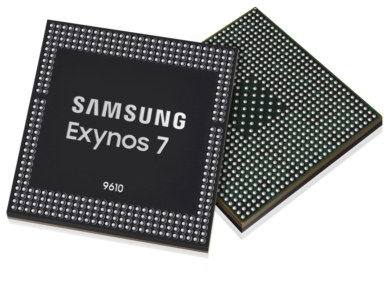Samsung has just unveiled the Exynos 2200 Armv9 SoC equipped with Samsung Xplipse 920 GPU based on AMD RDNA architecture and promising console quality graphics on mobile devices. Manufactured with a 4nm process, the octa-core processor also features Arm Cortex-X2, Cortex-A710, and Cortex-A510 cores, a 5G modem for up to 7.35 Gbps downlink, 8K video encoding and decoding, as well as support for LPDDR5 memory and UFS 3.1 storage. Exynos 2200 specifications: CPU 1x Arm Cortex-X2 3x Arm Cortex-A710 4x Arm Cortex-A510 GPU – Samsung Xclipse 920 GPU built with AMD RDNA 2 technology enabling hardware-accelerated ray tracing (RT) and variable rate shading (VRS), a first on mobile according to Samsung VPU Video decode – 8Kp60 10-bit HEVC (H.265), 8Kp30 10-bit VP9, AV1 Video encode – 8Kp30 10-bit HEVC(H.265), VP9 AI – AI Engine with Dual-core NPU and DSP up to 52 TOPS (TBC) Memory – LPDDR5 Storage – UFS […]
MediaTek Dimensity 900 6nm SoC brings UFS 3.1, LPDDR5 to mid-range 5G smartphones
Arm Cortex-A78 and LPDDR5 would have been premium features not so long ago, but time flies, and the just-announced MediaTek Dimensity 900 5G SoC for mid-range smartphones includes two Cortex-A78 cores, six Cortex-A55 cores, support for LPDRR5/4 memory, UFS 3.1 storage, and of course 5G cellular connectivity up to 2.77Gbps. The mobile processor’s multimedia capabilities are pretty good as well with support for displays up to 2520 x 1080 resolution at 120 Hz, up to 108MP camera, 4Kp30 video with H.265, H.264, AV1, as well as an Arm Mali-G68 MC4 GPU and third-generation APU 3.0 AI accelerator. MediaTek Dimensity 900 specifications: CPU – Octa-core DynamIQ processor with 2x Arm Cortex-A78 @ Up to 2.4GHz, 6x Arm Cortex-A55 @ Up to 2GHz GPU – Arm Mali-G68 MC4 AI Accelerator – MediaTek APU 3.0 VPU Video Encoding – H.264, H.265 / HEVC up to 4K @ 30FPS Video Playback – H.264, H.265 […]
Samsung Exynos 1080 Octa-core Cortex-A78/A55 5G SoC includes Mali-G78 GPU
Arm Cortex-A78 CPU core and Mali-G78 GPU were announced in March 2020, and yesterday we covered the first Cortex-A78 processor with MediaTek MT8195 that should feature a Mali-G57 GPU. But today, Samsung has announced the first SoC to combine both Cortex-A78 cores with Mali-G78 GPU. Exynos 1080 octa-core processor also includes a 5G NR modem, supports for LPDDR5 memory, UFS 3.1 storage, and manufactured with a 5nm process. Samsung Exynos 1080 key features and specifications: CPU Single-core Cortex-A78 @ 2.8 GHz Triple-core Cortex-A78 @ 2.6 GHz Quad-core Cortex-A55 @ 2.0 GHz GPU – Mali-G78 MP10 AI Accelerators – Neural processing unit (NPU) and Digital Signal Processor (DSP) Memory – LPDDR5 / LPDDR4x Storage – UFS v3.1 Display – WQHD+ @ 90Hz; FHD+ @ 144Hz; HDR10+ Camera – Single-camera Up to 200MP, dual-camera 32MP+32MP Video – 4K 60fps encoding and decoding with HEVC(H.265)/H.264/VP8/VP9 (10-bit only with HEVC & VP9) Connectivity Cellular […]
Getting a 3-inch Smartphone in 2020? You can with Unihertz Jelly 2 (Crowdfunding)
Most smartphones have 5″ or larger displays these days as it’s just more convenient to read emails, browse the web, or play games, than the smaller displays we had ten years ago. But some people may still prefer smaller smartphones that are lighter and really fit into any pockets. Those are just pretty hard to find, luckily some companies such as Unihertz are filling the needs for this niche market. Two years ago, the company introduced the Unihertz Atom smartphone with a 2.4″ display, and earlier this year launched Atom XL 4″ smartphone, but the company is now preparing to launch a new crowdfunding campaign for Jelly 2 smartphone powered by a MediaTek Helio P60 processor and equipped with a 3-inch display. Unihertz Jelly 2 specifications: SoC – MediaTek Helio P60 octa-core with four Arm Cortex-A73 up 2.0 GHz and four Arm Cortex-A53 up to 2.0 GHz, Arm Mali-G72 MP3 […]
UFS 3.1 Storage Devices to Deliver Better Performance, Lower Power Consumption
JEDEC first introduced UFS 3.0 embedded flash in September 2017 with promises of 2.4GB/s transfer rates, and somehow this was bumped to 2.9GB/s (23.2 Gbps) when UFS 3.0 specification was published in January 2018. JEDEC has now published UFS 3.1 specification with the same theoretical performance, but some new features that should improve write performance, random read performance, as well as lower power consumption and costs. Precisely two documents are now available for purchase, unless you work for a JEDEC member, in which case those are free downloads: The Universal Flash Storage (UFS) version 3.1, JESD220E. An optional new companion standard, JESD220-3: UFS Host Performance Booster (HPB) Extension. The first defines three main improvements as part of UFS 3.1: Write Booster – an SLC non-volatile cache that amplifies write speed DeepSleep – a new UFS device low power state targeting lower-cost systems that share UFS voltage regulators with other functions […]
Samsung Exynos 9820 Application Processor Supports 2 Gbps LTE, 8K Videos, UFS 3.0 Storage
Samsung has just unveiled a new high-end Exynos processor that comes with an enhanced NPU (Neural Processing Unit), and an LTE Advanced Pro modem supporting 2.0 Gbps downloads. Exynos 9820 is a tri-cluster octa-core processor with two custom Arm cores, two Cortex-A75 cores, and four Cortex-A55 cores coupled with an Arm Mali-G76 MP12, and manufactured using Samsung’s latest 8nm LPP FinFET process, which reduces power consumption by up to 10 percent compared to 10nm LPP process. Samsung Exynos 9820 key features and specifications: CPU – Dual-core custom CPU + dual-core Cortex-A75 + quad-core Cortex-A55 GPU – ARM Mali-G76 MP12 Integrated NPU Memory I/F – LPDDR4x Storage I/F – UFS 3.0, UFS 2.1 Display – WQUXGA (3840×2400), 4K UHD (4096×2160) Cellular Connectivity LTE Modem – LTE-Advanced Pro Cat.20 8CA 2Gbps (DL) / Cat.20 3CA 316Mbps (UL) 4×4 Multiple-Input, Multiple-Output (MIMO), 256-QAM (Quadrature Amplitude Modulation), and Enhanced Licensed-Assisted Access (eLAA) technology. Camera […]
Hikey 970 Development Board is Now Up for Pre-order for $299.99
Four A.I. development boards compliant with 96Boards specifications were announced at Linaro Connect HK 2018 last month: HiKey 970, Ultra96, as well as ROCK960 PRO & Enterprise Edition. So for we only knew pricing for Ultra96 ($249), but I’ve now noticed Hikey 970 “Super Edge AI Computing Platform” is now up for pre-order for $299.99 on Lenovator website, with shipping planned for the end of April. [Update: Also found on Seeed Studio for the same price] Hikey 970 specifications: SoC – Huawei/Hisilicon Kirin 970 with 4x Cortex A73 @ 2.36GHz, 4x Cortex A53 @ 1.8GHz, Arm Mali G72-MP12 GPU, NPU (Neural Processing Unit) with 256MAC/cycle @ 960MHz System Memory – 6GB 1866MHz, 4 Channel LPDDR4x Storage – 64GB UFS storage, micro SD card slot, PCIe Gen3 on M.2 M key connector Video Output – HDMI 1.4 type A up to 1080p60 (TBC), 1x 4-lane MIPI DSI (via HS expansion connector) […]
Samsung Exynos 9610 (7 Series) Processor Unveiled with Full HD 480 FPS Slow-Motion Support
Samsung has announced yet another Exynos 7 series application processor with Exynos 9610, built on Samsung’s 10-nanometer (nm) FinFET process, and supporting premium features such as deep learning-based image processing and slow motion video recording at 480 frames per second in full HD. The SoC includes four Cortex-A73 cores, four Cortex-A53, and Arm Mali-G72MP GPU, a sensor hub based on a Cortex M4F real-time core, an LTE Cat 13 modem, 802.11ac WiFi and more. Samsung Exynos 9610 key specifications: CPU – Quad core Arm Cortex-A73 @ up to 2.3 GHz, quad core Arm Cortex-A53 @ up to 1.6 GHz GPU – Arm Mali-G72 MP3 Memory I/F – LPDDR4x Storage I/F – UFS 2.1, eMMC 5.1 Display – Up to WQXGA (2560×1600) Camera – Rear: 24MP; Front: 24MP,; Dual Camera: 16+16MP Video – 4K UHD 120fps encoding and decoding with HEVC/H.265), H.264, VP9 Connectivity LTE Modem – LTE Cat.12 3CA 600Mbps […]


